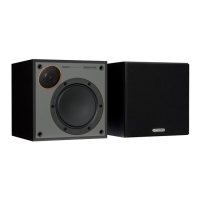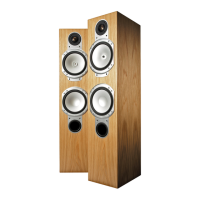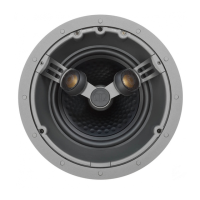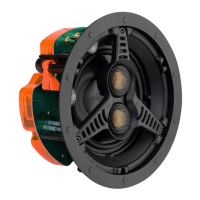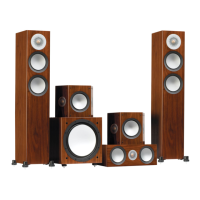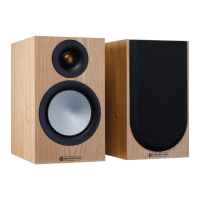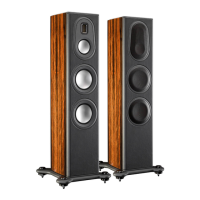Port bungs
WARNING: Care must be taken not to insert the port bungs too far into the port, as
this may result in the foam bung being lost inside the cabinet.
If the loudspeaker is to be installed in a small room, typically 9 sqM (80 sqFT), or a room known to
reproduce accentuated bass response, it may be desirable to fit port bungs. However, experimentation
is recommended with positioning of the loudspeaker in the room prior to fitting. To optimise performance
from the loudspeaker it is important to ensure the loudspeaker is not positioned too close to a wall or
near the corners of a room.
If the positioning of the loudspeaker is predetermined by room aesthetics or layout, you find you have
accentuated bass or in the case speakers are to be sited in close proximity (less than the minimum
suggested distances suggested on page 2) to a rear wall (such as on a bookshelf, positioned in a
cabinet or on a stand close to a wall), we recommend fitting port bungs to the ports. This will reduce
the bass ‘boom’ sometimes termed as overhang, and assist the loudspeakers to reproduce their best
performance under these environmental conditions.
Boom is generally caused when bass energy from the loudspeaker ‘excites’ room modes and causes an
accentuation at a particular frequency, or number of frequencies.
When fitting port bungs the overall bass extension will not be reduced, however bass energy/ output
around the port tuning frequency will be reduced. This has the effect of reducing bass ‘boom’ while
increasing bass clarity and apparent agility.
In all circumstances experimentation is highly recommended.
Running-In Your Speakers
Run your speakers in by playing normal music at low-mid listening levels for approximately 50-70 hours
play time. You may find the sound will continue to improve even after 70 hours.
This can be done naturally over time: like a fine wine the performance will improve with age.
Alternatively if you wish to run the speakers continuously on loop you can decrease the audible volume/
presence by placing the speakers face-to-face so that the drivers/tweeters are directly aligned and
as close as possible. Then connect the amplifier to your speakers so that one is as normal (in phase):
positive to positive and negative to negative (red to red and black to black), and the other speaker out of
phase: positive to negative and negative to positive inputs on the speaker.
monitoraudio.com 5
ENGLISH
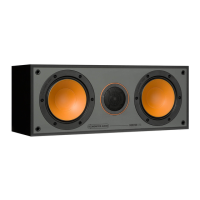
